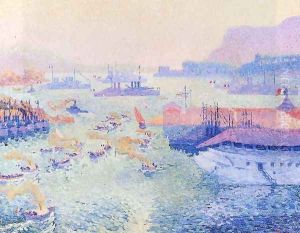William Henry Pearson Paintings
William Henry Pearson was an English artist born in 1870 in the town of Woodford, Essex. His upbringing and education in the arts are not well-documented in the historical record, but he was known to be active during the late 19th and early 20th centuries, a period known for its dynamic changes in the art world. Pearson's work primarily consisted of landscape and genre paintings, following in the tradition of realism that was prevalent during his time.
Pearson's artistic career unfolded during an era when the art world was experiencing significant transitions, with movements such as Impressionism, Post-Impressionism, and the beginnings of Modernism taking shape. Despite these changes, Pearson remained largely associated with the naturalistic depiction of rural and urban scenes. His work was recognized for its attention to detail, use of color, and ability to capture the essence of the English countryside and the livelihoods of its inhabitants.
Throughout his career, William Henry Pearson exhibited his work at various institutions, which was a common practice for artists seeking recognition and patronage. He was known to have shown his work at the Royal Academy in London, a prestigious venue for artists of the time. Exhibiting at the Royal Academy helped Pearson to establish his reputation and sell his works to a broader audience.
William Henry Pearson's life was relatively short, as he passed away in 1923. Despite his death at the age of 53, he left behind a body of work that contributes to the understanding of English art at the turn of the century. His paintings remain as a testament to the era's aesthetic values and the enduring appeal of the English landscape in art. The legacy of artists like Pearson continues to be appreciated by art historians and collectors who have an interest in the period and its artistic output.
